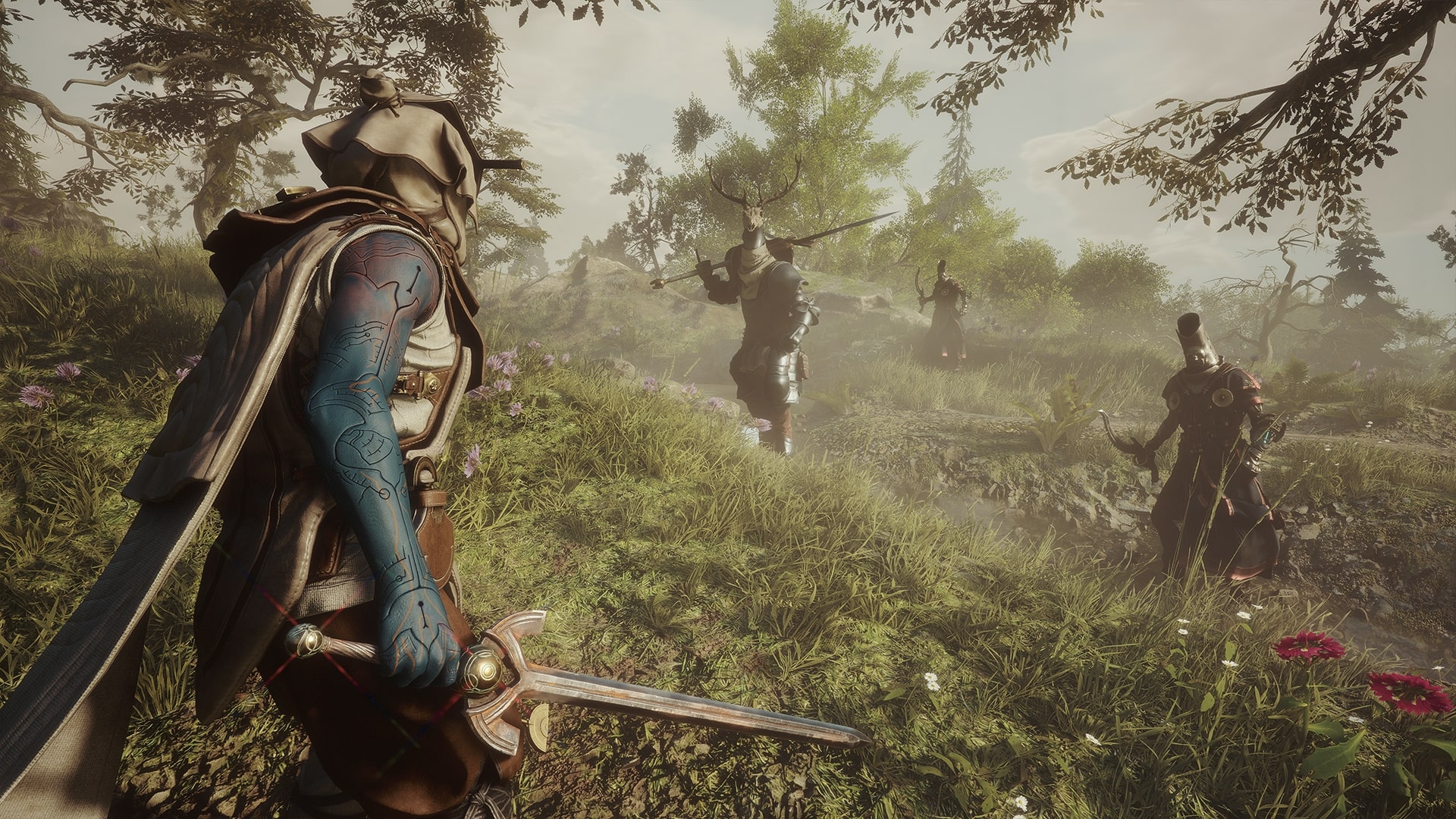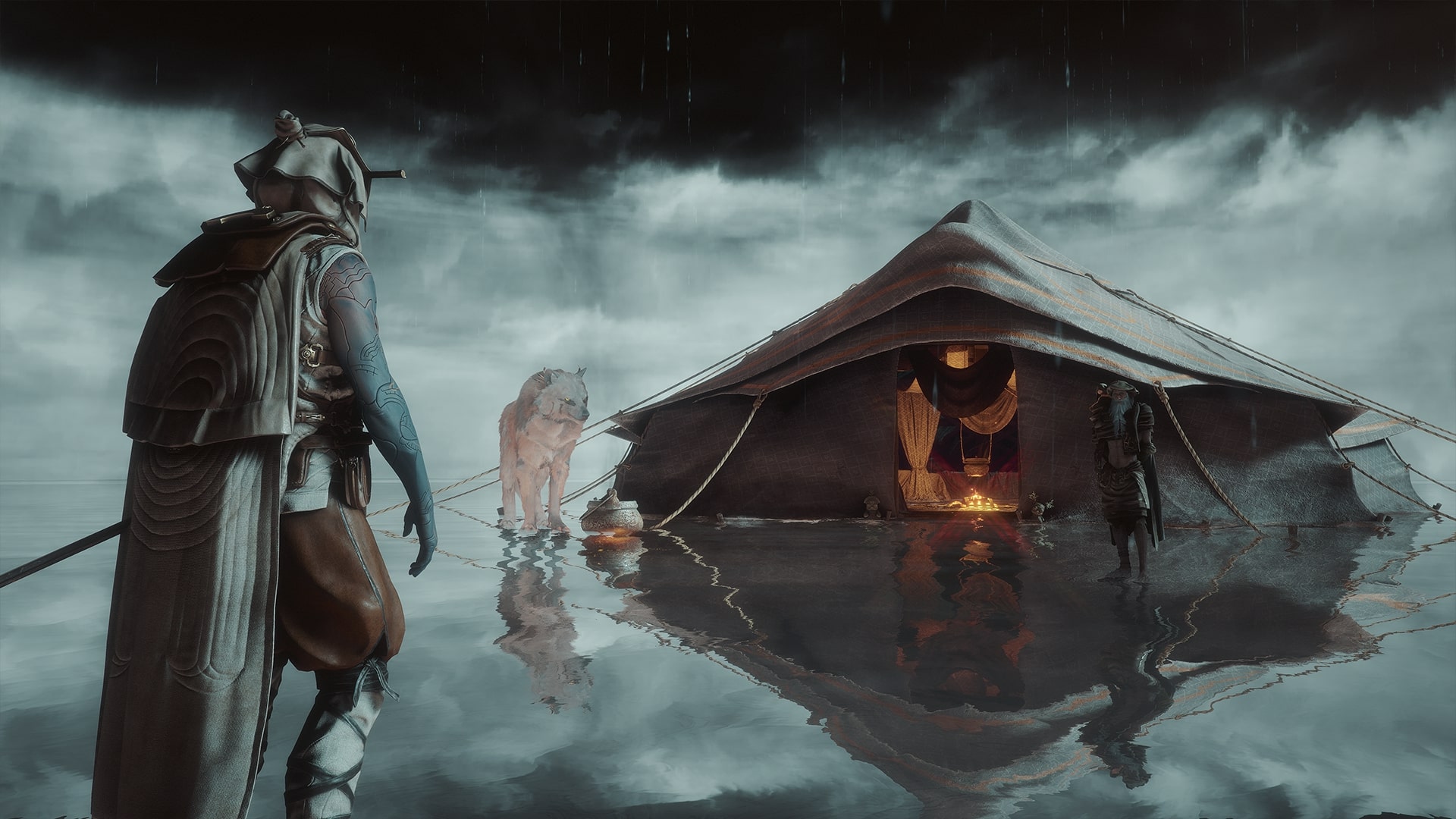MMO Action RPG Soulframe is a gentle but powerful story of “nature vs. industry”
Back to nature

The world of upcoming action RPG Soulframe is surprisingly quiet. A luscious forest looms ahead, tree branches framed by a gentle mist. Animals scuttle about in the undergrowth, while gentle sunlight shines through the canopy. As vivid and distinctive as the Scottish Highlands or the Serengeti, Soulframe’s environments are a testament to natural beauty.
This is exactly what Geoff Crookes, creative director of Soulframe at Digital Extremes, had in mind when creating the upcoming fantasy title. Though currently only in a prototype state, TRG was treated to a hands-off demo of the game, as well as an opportunity to pick Crookes’ brain about his latest project. Like Warframe before it, Soulframe aims to provide a free-to-play co-op-friendly experience. That said, Crookes and his colleagues are aiming to take a “big swing” with Soulframe, going off the beaten path.
“It comes out of mine and [game director] Steve [Sinclair]’s experience. We’re both 20 years plus in the industry,” explained Crookes. “We wanted to take a big swing and make it seem like something that would have… deeper meaning and try to make a statement.”

Speaking on Soulframe’s gentle and earnest portrayal of nature, Crookes clarified that “we do want the game to feel like a bit of a hug. There’s gonna be combat in the game, but, we don’t want it to be punishing. We want progression systems in this game that make you feel more immersed in the world… It’s not all just going to be combat-based.”
This gentle touch not only humanized our villains but gave them a tangible sense of history
This was reflected in the prototype demo, where the protagonist - known as the Envoy - spent as much time exploring and reconnecting with the past as they did fighting. In one memorable scene, the Envoy found an old totem, where, upon playing a melody on their ocarina, we were treated to a flashback featuring a moment between the quest’s main antagonist and her companion, a young stag, adding context that would make the final confrontation all the more memorable and emotionally resonant.
This gentle touch not only humanized our villains but gave them a tangible sense of history. For Crookes, it’s about “nature vs. industry”, allowing players to take on the role of a rejuvenating force in a wider conflict of “good versus evil, black versus white.”
Greener pastures

Soulframe’s central premise revolves around helping the denizens of the world of Alca recover their lost past and their lost connection to nature, both of which have been damaged by the Ode’n - an invading force of industrialized conquerors who, according to Crookes, embody a sort of “sci-fi tech creep.”
Sign up for breaking news, reviews, opinion, top tech deals, and more.
However, contrary to darker fantasy offerings, the world of Alca is not beyond repair. Crookes was very clear that he wanted players to be able to “heal this world.” To this end, the player character occupies a unique position in the setting. A defector who previously fought for the Ode’n, the Envoy has unlocked the power of the Fey arm, which “acts as a conduit” allowing them to form pacts with great beasts, giving them access to new powers that are vaguely analogous to classes in other RPGs.
The protagonist strives to reconnect with their lost ancestors
On this quest, the Envoy strives to reconnect with their lost ancestors, coomuning with them as they grow more powerful. As Crookes puts it, the player character strives for “redemption of themselves.” When crafting the bosses, environments and major characters of Soulframe, Crookes and his team asked “What is the redemption arc in this story? It’s not just [about] killing.”
According to Crookes, Soulframe is, “an Arthurian setting” where mythic forces content to restore the “natural state” of both “the player” and the wider world. “Ancestry and archeology” play a big role in Soulframe, both in terms of the setting but also in terms of how the game’s mechanics are framed.

The demo’s final boss battle embodied these principles in a big way, having the player battle with a corrupted noblewoman and her stag companion. Rather than slay them, however, the Envoy uses their powers to free them, helping both reconnect with who they were before the coming of the Ode’n corruption. All the while, a beautiful folk song rose across the scene which used the melody the Envoy played on their ocarina earlier in the quest. It was a warm touch, offering a welcome departure from the relentless darkness of other action RPGs like Elden Ring and Remnant 2.
Swords and sorcery

Despite Soulframe’s use of fantastical and mythological themes, the game’s combat mechanics and animations are firmly rooted in the reality of early medieval history in the real world. When I asked how Crookes and his team had put together such realistic and weighty animations, he drew attention to how the team had “researched a lot of historical European martial arts [including] German straight sword techniques. I did a lot of the block out keyframe animation. [The team] built on that foundation and worked in the parry and riposte systems.”
Soulframe's combat is firmly rooted in the reality of early medieval history
For the uninitiated, in animation, a keyframe defines the start or end points for any smooth transition in a piece of animation. Titles with clear systems for parrying, dodging, and riposting will often use a keyframe-centric approach to allow for deliberate movements that result in movements ending in a specific pose.
This helped Crookes and his team slow the combat down, offering a contrast to faster-paced sci-fi shooter Warframe which he had worked on before starting work on Soulframe. As Crookes put it, in Warframe, “you have to use blended animations to allow for the mobility [of the characters].”

The movement from more fluid blended animations to a more keyframe-heavy approach allowed Crookes to move to a look that feels “very deliberate”, full of “full body animations that make it feel like it has weight.” Though spells and ranged attacks also play a role, the majority of the game is “based in melee”, relying on a slower, more deliberate combat system to imbue the game with a sense of ponderousness.
Though it’s early days, the Soulframe demo offered a sensitive fantasy experience, where myth, nature, and redemption go hand-in-hand with deliberate, weighty, and well-animated combat. Though our hands-off demo was only a prototype, it seems that, even at this early stage, Soulframe has found a distinctive identity in the action RPG space. With decades of expertise under the collective belts, Crookes and his team are in a position to deliver an
antidote to the hectic pace of the modern world - offering a mythological title that strives to help players reconnect with their roots.
Want to know what’s on the horizon? Our list of the best upcoming games has you covered. Otherwise, our lists of the best PS5 games and the best Xbox Series X games will help you suss out the best games available at the moment.

An editor and freelance journalist, Cat Bussell has been writing about video games for more than four years and, frankly, she’s developed a taste for it. As seen on TechRadar, Technopedia, The Gamer, Wargamer, and SUPERJUMP, Cat’s reviews, features, and guides are lovingly curated for your reading pleasure.
A Cambridge graduate, recovering bartender, and Cloud Strife enjoyer, Cat’s foremost mission is to bring you the best coverage she can, whether that’s through helpful guides, even-handed reviews, or thought-provoking features. She’s interviewed indie darlings, triple-A greats, and legendary voice actors, all to help you get closer to the action. When she’s not writing, Cat can be found sticking her neck into a fresh RPG or running yet another Dungeons & Dragons game.